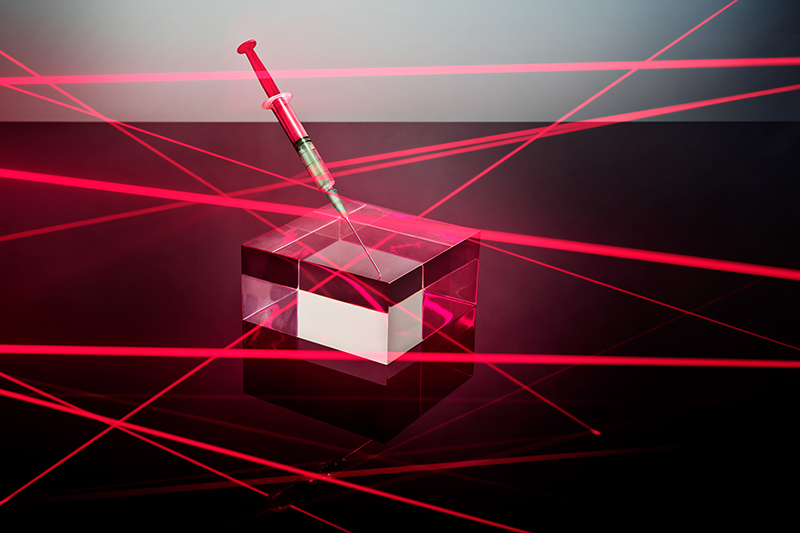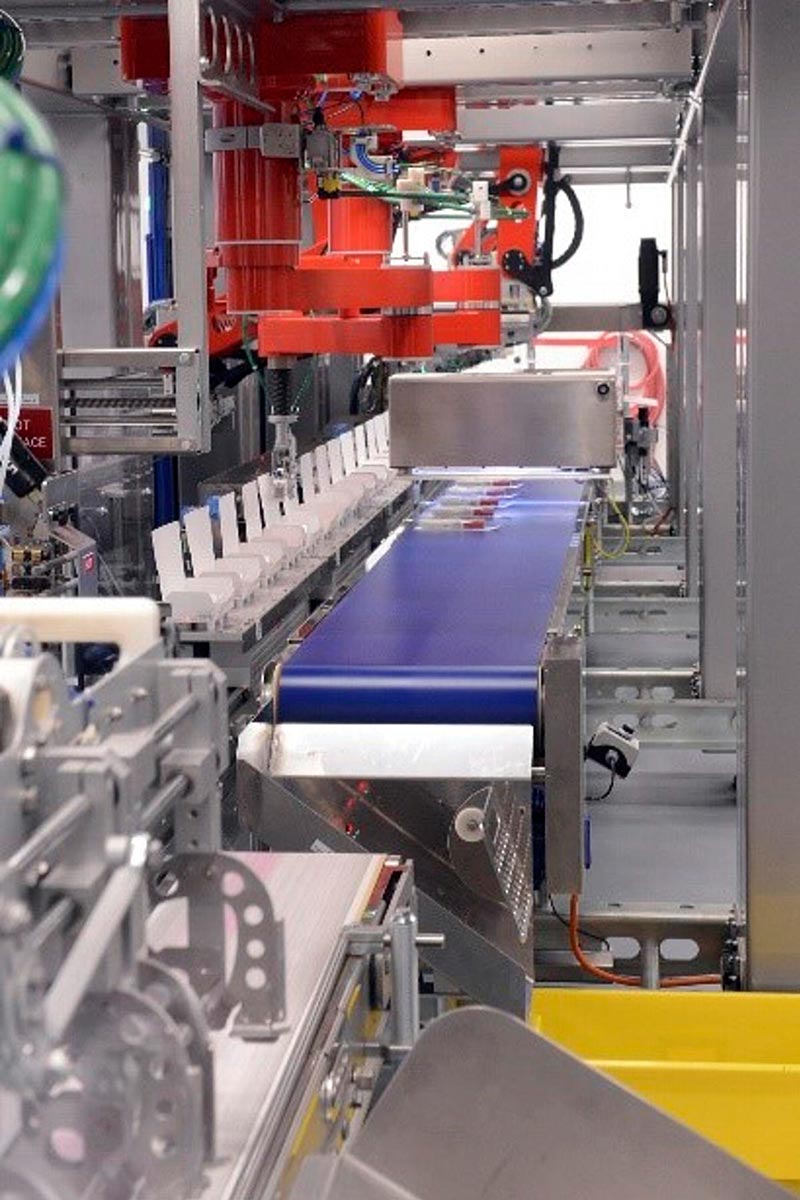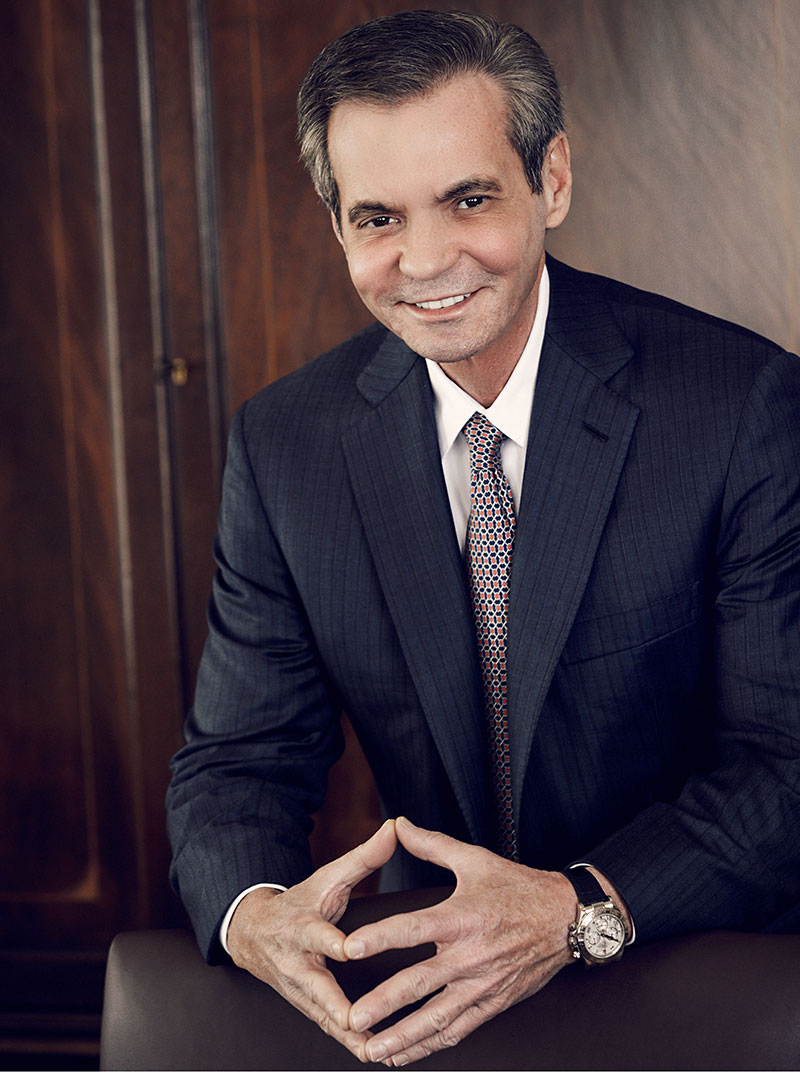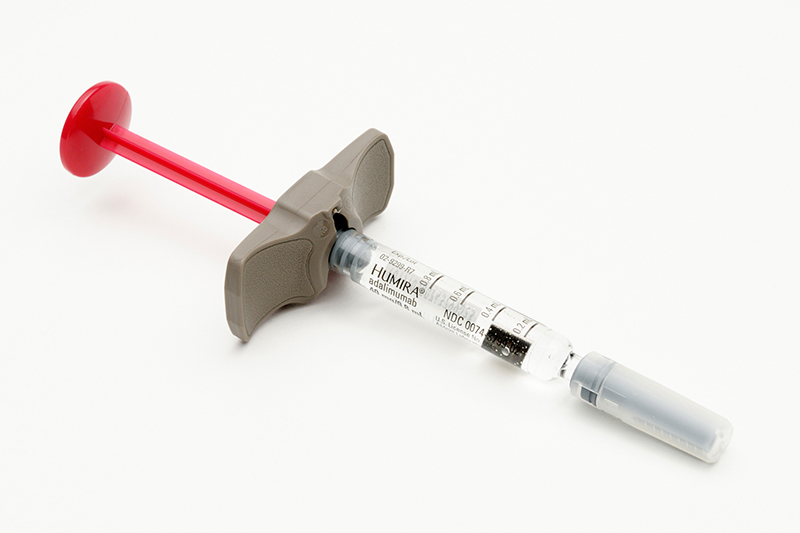這家藥企靠一款藥躋身世界500強(qiáng),但死不降價(jià)引爭議

|
你可能沒有得過需要修美樂(Humira)治的病,但可能聽說過這種藥。 修美樂是艾伯維的旗艦藥品,主治關(guān)節(jié)炎、銀屑病、克羅恩病和潰瘍性結(jié)腸炎等多種疾病,也是全世界最暢銷的藥。僅去年一年,全球銷售額就達(dá)近200億美元。正如2月一場藥物價(jià)格聽證會上美國一位參議員指出,修美樂(如果是一家獨(dú)立的公司)龐大的銷售額已經(jīng)能夠躋身《財(cái)富》美國500強(qiáng)。 乍一看,似乎很難找到更完美的藥品成功故事。2013年雅培公司將旗下著名的制藥部門剝離為獨(dú)立的公司,即艾伯維。2002年12月31日艾伯維獲得了美國食品與藥品管理局首份批文,修美樂獲準(zhǔn)上市。兩年多后,該款注射藥的全球銷售額超過10億美元,在制藥行業(yè)里邁入傳統(tǒng)意義上“重磅”地位的門檻。在如此短的時(shí)間內(nèi)實(shí)現(xiàn)這一成就,堪稱驚人壯舉。2006年修美樂銷售額達(dá)到20億美元,短短兩年內(nèi)就翻了一番。到2013年,修美樂已經(jīng)成為全世界最暢銷的藥,在60多個(gè)市場上的銷售額達(dá)到107億美元,盡管看起來機(jī)會渺茫,但之后五年龐大的銷售數(shù)字幾乎又翻了一番。 重要的一點(diǎn)是,修美樂確實(shí)有效,也改變了不少病人的生活。藥物用預(yù)裝藥品的注射器皮下注射,說是藥,嚴(yán)格來說是人體抗體(下文將介紹更多的細(xì)節(jié)),通過抑制炎癥的核心蛋白,經(jīng)過許多病理過程從而起效。臨床試驗(yàn)中,罹患類風(fēng)濕關(guān)節(jié)炎(導(dǎo)致關(guān)節(jié)疼痛和進(jìn)行性腫脹的自身免疫性疾病)的患者活動能力迅速改善,關(guān)節(jié)退化速度明顯減緩。美國有超過800萬人患有皮膚病銀屑病,研究發(fā)現(xiàn)修美樂能夠在幾個(gè)月內(nèi)清除75%到90%的疼痛和瘙癢皮疹。中度到重度克羅恩病(導(dǎo)致人體衰弱的腸道疾病,需要住院治療甚至做手術(shù))方面,使用該藥治療可以降低對深入治療的需求,同時(shí)促進(jìn)“粘膜愈合”,即炎癥性腸病可能緩解的跡象。 所以你可能會想,既然修美樂能夠幫助數(shù)百萬身患重病痛苦掙扎的人們,賺上數(shù)十億美元有什么不對?制藥行業(yè)不就應(yīng)該做這些嗎? 答案就像制藥行業(yè)有很多方面一樣,在于一系列副作用,而且通常寫在小字說明里。修美樂的故事也有陰暗的一面,體現(xiàn)在數(shù)十億美元不必要的藥品成本,以及現(xiàn)代藥物開發(fā)關(guān)鍵領(lǐng)域的競爭中。盡管看起來像科學(xué)創(chuàng)新和營銷成功的典型,但修美樂變成全球暢銷藥其實(shí)是行業(yè)緩慢失敗的案例,可以看出制藥公司越來越放棄投資研發(fā)新藥,更傾向于從外部購買(支付溢價(jià))。該模式提高了患者、政府支付、保險(xiǎn)公司,甚至是制藥公司股東的成本。 事實(shí)上,跳過驚人的銷售數(shù)字,艾伯維每年200億美元銷售額的現(xiàn)象級熱門藥更像對大型制藥公司和消費(fèi)者的警告。 想了解各種原因,最好先了解修美樂是什么,以及從何而來。 |
You may not have any of the conditions Humira treats. But chances are, you’ve heard of it. AbbVie’s flagship therapy, a medicine used to treat a slew of conditions from arthritis to psoriasis to Crohn’s disease and ulcerative colitis, is the bestselling drug in the world, bringing in nearly $20 billion in global sales last year alone. As one U.S. senator noted at a hearing on drug prices in February, that titanic sales figure would be enough to put Humira (were it a company unto itself) on the Fortune 500 list. And on first glance, it’s hard to conceive of a more perfect archetype for drug success. Abbott Laboratories—which spun off its branded pharmaceuticals unit as a separate company, AbbVie, in 2013—received its first FDA approval to market the medicine on Dec. 31, 2002. A little more than two years later, the injectable drug surpassed the billion-dollar mark in global sales, traditionally the threshold for “blockbuster” status in the pharmaceutical industry—a stunning feat in such a brief span. By 2006, sales had reached $2 billion, a number that would more than double in just two years’ time. By 2013, Humira was the world’s bestselling drug, with $10.7 billion in sales across more than 60 markets, and as improbable as it seems, even that colossal sales figure has nearly doubled again in the half-decade since. Humira is also, importantly, an effective medicine—and for some people, a life-changer. Injected under the skin by way of a prefilled syringe, the drug—technically, a human antibody (more on that detail soon)—works by inhibiting a key protein that’s central to inflammation, a process that’s implicated in a number of pathologies. In clinical trials, patients with rheumatoid arthritis, an autoimmune disease that leads to painful and progressive swelling of the joints, have experienced rapid improvement in movement and a marked slowing of joint deterioration. In the skin condition psoriasis, which afflicts more than 8 million Americans, studies found the drug could clear up painful and itchy rashes by 75% to 90% in months. In ?moderate-to-severe forms of Crohn’s disease, a gut disorder that can prove debilitating and require hospitalization or even surgery, the treatment has been able to cut the need for drastic medical action while boosting “mucosal healing”—a possible sign that an inflammatory bowel disease is in remission. So, you might wonder, what’s not to like about a medicine that helps millions of people suffering from serious and painful conditions and that has made its owners billions of dollars in the process? Isn’t that what the pharmaceutical industry is supposed to do? The answer, like so many aspects of the drug industry, lies in the litany of side effects that are spelled out in the fine print. For the Humira tale has a dark side too—one that’s reflected in many billions of dollars in unnecessary drug costs for consumers and in stymied competition in a critical area of modern drug development. As much as it might look like the quintessential example of scientific innovation and marketing success, the story of how Humira became the world’s bestselling drug is a case study of an industry in slow-motion failure—of a corporate model that is increasingly forsaking investing in research and discovery in favor of purchasing it (at a premium) from the outside. That model is driving up costs for everybody—patients, government payers, insurers, and, yes, even drug company shareholders. Indeed, read past those striking sales figures, and AbbVie’s $20 billion-a-year drug phenom might well look like a black-box warning for Big Pharma and consumers alike. To understand why, it helps to understand what Humira is and where it came from. |
****
|
修美樂并不算“藥”,實(shí)際上是名叫單克隆抗體或mAb的生物實(shí)體。簡單地說,單克隆抗體是通過誘導(dǎo)特定免疫反應(yīng)而產(chǎn)生的蛋白質(zhì)。實(shí)驗(yàn)室造出的抗體結(jié)合到有害因子的特定抗原上,從而阻滯其產(chǎn)生作用。 1986年,美國食品與藥品管理局批準(zhǔn)了第一種單克隆抗體,是用于器官移植患者的免疫抑制藥物。從那時(shí)起,已經(jīng)有超70多款單克隆抗體藥物獲批,其中大多數(shù)針對各種癌癥和免疫疾病。不過修美樂與其他藥在關(guān)鍵方面不同,修美樂是“全人源”抗體,而不是來自于老鼠的抗體。全人源單克隆抗體引發(fā)副作用的可能性較小。修美樂的名字就在紀(jì)念該項(xiàng)開創(chuàng)性科學(xué),英文名Humira是“類風(fēng)濕關(guān)節(jié)炎人類單克隆抗體”的縮寫,類風(fēng)濕關(guān)節(jié)炎也是首個(gè)獲準(zhǔn)治療的疾病。 盡管科學(xué)原理很酷,但修美樂并不是艾伯維研發(fā)的,也不是來自于艾伯維的前身雅培公司。2001年,雅培從德國巴斯夫化學(xué)公司收購了諾爾制藥公司。諾爾劍橋抗體技術(shù)(名字起得不錯(cuò))獲得了抗體技術(shù)許可,而劍橋抗體技術(shù)又從英國醫(yī)學(xué)研究委員會獲得了該技術(shù)(大部分)許可,該委員會根據(jù)格雷戈里·溫特爵士的研究開發(fā),后來溫特爵士因?yàn)樵擁?xiàng)研究而分享了2018年諾貝爾化學(xué)獎(jiǎng)。 |
Humira isn’t a “drug,” technically speaking—it’s a biological entity known as a monoclonal antibody, or mAb. Put simply, mAbs are proteins created by inducing a specific immune response; these lab-created antibodies then bind to specific antigens on the surface of biological adversaries and work to neutralize the offenders. The FDA approved the first mAb, an immunosuppressive drug for organ transplant patients, in 1986. More than six dozen have been approved since then, with most targeting various cancers and immune diseases. But Humira was different in one key way from those that preceded it—it was a “fully human” antibody, as opposed to one derived from a mouse. Fully human mAbs are less likely to cause adverse side effects. Humira’s name is itself a tribute to this pioneering science—it stands for “human monoclonal antibody in rheumatoid arthritis,” the first disease it was approved to treat. As cool as that science is, it didn’t come from AbbVie—or even from its progenitor, Abbott. Abbott picked up the biologic in 2001 when it purchased the Knoll Pharmaceutical unit from German chemical company BASF. Knoll, in turn, had licensed the antibody technology from a company called (appropriately) Cambridge Antibody Technology—which, in turn, had licensed it (in large part) from Britain’s Medical Research Council, where it was developed from the research of Sir Gregory Winter, who would eventually share in the 2018 Nobel Prize in Chemistry for that very same science. |

|
然而2002年,雅培公司第一次獲得美國食品與藥品管理局對修美樂的批準(zhǔn)。雅培的研究人員很明智地測試了該藥對炎癥性疾病的療效,隨后不斷取得臨床試驗(yàn)成功和新許可。2005年,雅培獲準(zhǔn)推廣使用該藥治療銀屑病關(guān)節(jié)炎;2006年可以治療影響脊柱的關(guān)節(jié)炎、強(qiáng)直性脊柱炎;2007年獲準(zhǔn)治療克羅恩病;2008年拓展到斑塊型銀屑病(最常見的皮膚瘙癢癥狀)和一種幼年關(guān)節(jié)炎;2012年增加了潰瘍性結(jié)腸炎。2013年雅培剝離艾伯維后,艾伯維仍然在針對新疾病采取臨床試驗(yàn),并在數(shù)十個(gè)市場上申請監(jiān)管批準(zhǔn)。 更多適應(yīng)癥意味著要治療更多患者,銷售量也更大,正因如此,制藥公司獲得美國食品與藥品管理局針對某一市場的批準(zhǔn)后,總會盡力增加藥物治療范圍。 不過在修美樂身上,艾伯維宣傳起來也毫不吝嗇。據(jù)Kantar Media報(bào)道,僅去年一年,艾伯維宣傳這款明星產(chǎn)品就花了近4.9億美元,位列2018年醫(yī)藥廣告支出榜首。相比之下,輝瑞公司斥資2.72億美元宣傳止痛藥普瑞巴林(Lyrica)廣告費(fèi)僅居第二。艾伯維也在社交媒體廣告上投入大量資金,未算在上述推廣費(fèi)用內(nèi)。今年1月1日以來,修美樂的電視廣告已經(jīng)播放4.6萬次。 當(dāng)然,積極的市場營銷必然伴隨著價(jià)格上漲。在美國,制藥公司可以為藥品自由定價(jià)。修美樂制造者也確實(shí)這么做了。美國AARP公共政策研究所和明尼蘇達(dá)大學(xué)的PRIME研究所數(shù)據(jù)顯示,2006年到2017年間,美國治療類風(fēng)濕性關(guān)節(jié)炎的標(biāo)準(zhǔn)40毫克修美樂注射筆標(biāo)價(jià)漲到三倍多,一年供應(yīng)價(jià)格從16636美元飆升至58612美元。年復(fù)合增長率超過12%。 |
It was Abbott, however, that received the first FDA approval for Humira, in 2002. Researchers there had the good sense to try it against other manifestations of inflammatory disease—and new clinical successes and approvals kept coming: In 2005, Abbott got permission to market the antibody for the treatment of psoriatic arthritis; then ankylosing spondylitis, a form of arthritis affecting the spine, in 2006; Crohn’s disease in 2007; plaque psoriasis (the most common type of the itchy skin condition) and a form of juvenile arthritis in 2008; and ulcerative colitis in 2012. After Abbott spun off AbbVie in 2013, the latter continued recruiting clinical trials in new disease settings and petitioning for regulatory approval across dozens of markets. More indications mean a larger pool of patients to treat and, consequently, more sales—which is why drug companies do their best to increase the therapeutic reach of their drugs once they’ve gotten a single marketing approval from the FDA. But in the case of Humira, its owners didn’t take any chances getting the word out. Last year alone, AbbVie spent just shy of $490 million to hawk its superstar product, topping the list of 2018 pharmaceutical ad spending, according to Kantar Media. By comparison, Pfizer’s $272 million on advertising for the pain drug Lyrica came in second. AbbVie also spent significantly on social media advertising, not included in the figure above. And television ads for Humira have aired more than 46,000 times since Jan. 1 of this year. Along with the über-aggressive marketing, naturally, came price hikes. In the U.S., pharma companies can charge whatever they want for their products. And the makers of Humira did just that. The U.S. list price of the standard 40 mg Humira injectable pen, used in the treatment of rheumatoid arthritis, more than tripled from 2006 to 2017, with the price for a one-year supply soaring from $16,636 to $58,612, according to the AARP Public Policy Institute and the University of Minnesota’s PRIME Institute. That’s a compound annual growth rate of over 12%. |

|
制藥公司經(jīng)常辯稱,標(biāo)價(jià)具有誤導(dǎo)性,無法反映與福利經(jīng)理、保險(xiǎn)公司和援助計(jì)劃的私人安排,而種種安排其實(shí)可以大幅降低患者支付的成本。 今年3月,紐約大型食品店工人工會UFCW Local 1500 福利基金針對艾伯維的訴訟中顯示,即便考慮各種因素,修美樂的價(jià)格仍在飆升。訴訟稱,與各種醫(yī)療保健中間商協(xié)商了折扣后,修美樂在美國的平均售價(jià)從2012年的每年約19000美元翻了一番,到2018年年初超過38000美元。艾伯維拒絕就定價(jià)策略置評。 |
Drug companies often argue that such list prices are misleading because they don’t reflect private arrangements with benefits managers, insurance companies, and assistance programs that can significantly reduce out-of-pocket costs for patients. But even with such factors considered, Humira’s price kept soaring, as documented in a March lawsuit against ?Abb?Vie filed by UFCW Local 1500 Welfare Fund, a large New York grocery workers’ union. After the rebates and discounts negotiated with various health care middlemen, the suit alleges, Humira’s average price in the U.S. doubled from about $19,000 per year per patient in 2012 to more than $38,000 in early 2018. AbbVie declined to comment on the record about its pricing strategy. |
****
|
一款藥治療多種疾病的效果令人震驚。艾伯維的收入從2013年,也就是成為獨(dú)立公司第一年的18.8億美元,增長到2018年的328億美元,在今年的世界500強(qiáng)榜單中排名第381位,比去年增長41位。期間艾伯維在各家大型制藥公司當(dāng)中收入增長率最高。 但現(xiàn)金奶牛也有問題:要繼續(xù)擠奶。要知道,修美樂不僅是艾伯維旗下最暢銷的藥物,也是重要支柱,2018年占公司收入60%以上。還有另一個(gè)問題:修美樂最初的美國成分專利于2016年12月到期,距離進(jìn)入美國市場已經(jīng)13年。(公司在歐洲的一項(xiàng)并行專利已經(jīng)于去年10月到期。) 面對專利難題,艾伯維為了保證修美樂的市場霸主地位采取了最后一招,沒準(zhǔn)也是最強(qiáng)力的一招:起訴追趕的同行。“艾伯維不僅是醫(yī)療領(lǐng)域的先驅(qū),也是法律保護(hù)領(lǐng)域的先驅(qū)。”加州大學(xué)黑斯廷斯法學(xué)院教授,也是《藥品、金錢和秘密勾結(jié)》(Drugs, Money, and Secret Handshakes)一書作者羅賓·費(fèi)爾德曼告訴《財(cái)富》雜志。 根據(jù)宣傳和藥物監(jiān)督組織無障礙藥物協(xié)會的數(shù)據(jù),最初專利于2016年到期前三年里,艾伯維申請并獲得了75項(xiàng)與修美樂有關(guān)的專利。艾伯維的首席執(zhí)行官理查德·岡薩雷斯表示,目前公司擁有約136項(xiàng)與修美樂相關(guān)的專利。 艾伯維如何在一個(gè)產(chǎn)品上獲得如此多專利?主要還是因?yàn)樾廾罉穼儆凇吧镏苿彼幬铩Ec化學(xué)合成藥物不同,生物制劑來源于實(shí)際的生物材料,比標(biāo)準(zhǔn)化學(xué)藥物更復(fù)雜。費(fèi)爾德曼解釋說,這就是艾伯維知識產(chǎn)權(quán)戰(zhàn)略的關(guān)鍵所在。舉例來說,公司可以為生產(chǎn)制造過程中模糊的步驟或劑量調(diào)整申請專利。 這正是艾伯維的操作。艾伯維在電郵聲明中稱,美國專利商標(biāo)局(USPTO)已經(jīng)授予該公司30多項(xiàng)與藥物管理方式相關(guān)的專利;超過25項(xiàng)藥物配方的專利;50多項(xiàng)與修美樂生產(chǎn)工藝相關(guān)的專利;以及患者用來注射藥物裝置的約20項(xiàng)專利。 Goodwin Procter事務(wù)所的律師羅伯特·瑟溫斯基解釋說,制造單克隆抗體當(dāng)然并不容易。“制造阿達(dá)木單抗(修美樂的學(xué)名)主要靠發(fā)酵過程,涉及到經(jīng)過基因工程改造的細(xì)胞株,由15000升的生物反應(yīng)器中生長的巨大細(xì)胞中分泌出大量阿達(dá)木單抗。”他告訴《財(cái)富》雜志。 之后的流程比較復(fù)雜。處理時(shí)必須凈化,去除不必要的副產(chǎn)品,為不同疾病針對性調(diào)整劑量,以及各種微調(diào)。瑟溫斯基表示,在所有程序中,“艾伯維這樣的著名制造商有很多機(jī)會聲稱,制造流程中即便很小的改進(jìn)也可以算作創(chuàng)新,而且可以受到專利保護(hù)。” 這對想靠生物仿制品打入市場的公司來說是個(gè)挑戰(zhàn)。(生物仿制藥即生物藥品的仿制藥,通常比著名制造商生產(chǎn)的藥品便宜得多。)他說,后來者“必須自行研發(fā)制造流程”。“過程就是產(chǎn)品。” 瑟溫斯基專攻生命科學(xué)領(lǐng)域的專利侵權(quán)訴訟已經(jīng)20多年,其中也包括與修美樂等單克隆抗體有關(guān)的訴訟。他還參與了改革美國專利制度,目前美國專利制度不僅允許而且鼓勵(lì)艾伯維之類制藥商打造所謂的專利叢林。 |
The combined effect of these efforts for a single drug has been stunning. AbbVie’s revenue grew from $18.8 billion in 2013, its first year as an independent company, to $32.8 billion in 2018, putting the company at No. 381 on this year’s Global 500, a rise of 41 spots from last year. Over that span, AbbVie has been the best in its peer group of big pharma companies in percentage revenue growth. But with this cash cow has come a problem: the need to keep milking it. You see, Humira isn’t just AbbVie’s bestselling drug, it is its everything-drug—accounting for more than 60% of the company’s 2018 revenues. And there is another catch: The initial U.S. composition patent for Humira expired in December 2016, 13 years after it first hit the American market. (A parallel patent in Europe expired this past October.) That conundrum brings up the last, and perhaps most potent, weapon in AbbVie’s campaign for market dominance with Humira: Sue anybody who comes close. “I think of AbbVie as a pioneer—not just in medical treatments but also in legal protections,” Robin Feldman, a professor at the UC Hastings College of the Law and author of Drugs, Money, and Secret Handshakes, tells Fortune. According to advocacy and drug watchdog group Association for Accessible Medicines, the company applied for and won 75 Humira patents in the three years before its initial patent expired in 2016. AbbVie CEO Richard Gonzalez has said the company now holds approximately 136 Humira patents. How was the company able to rack up so many patents on a single product? Much of it has to do with the type of drug that Humira is—a “biologic.” Unlike chemically synthesized drugs, biologics derive from actual biological material, making them significantly more complex than standard chemical medicines. And therein lies the key to AbbVie’s IP strategy, explains Feldman. For instance, a company may be able to file patents on obscure steps in the production and manufacturing process, or adjustments in dosing. And that’s precisely what AbbVie has done. AbbVie, in an emailed statement, says the U.S. Patent and Trademark Office (USPTO) has granted the company more than 30 patents on the ways in which the drug is administered; more than 25 patents on various formulations of the drug; more than 50 patents related to Humira’s manufacturing processes; and about 20 patents on the delivery devices that customers use to take the medicine. To be sure, creating a monoclonal antibody isn’t easy work, explains Goodwin Procter attorney Robert Cerwinski. “The manufacture of adalimumab [Humira’s scientific name] occurs through a process called fermentation, and it involves a cell line that’s genetically engineered to secrete large amounts of adalimumab from a huge vat of cells growing in, like, a 15,000-liter bioreactor,” he tells Fortune. Then things get even more complicated. Afterward, the treatment must go through purification processes to take out unnecessary by-products, modifications in dosage for different diseases, and all sorts of incremental tweaks. Amid all these procedures, Cerwinski says, “branded product sponsors like ?AbbVie have found many more opportunities to conclude that little wrinkles in the manufacturing process are innovative and can be protected by patents.” That presents a challenge for companies that want to enter the market with biosimilar copycats. (Biosimilars are generic versions of biologic medicines and are usually far cheaper than the brand-name medicines they imitate.) Those challengers “have to come up with their own process,” he says. “The process is the product.” Cerwinski has been litigating patent infringement with a focus on the life sciences for more than two decades, including litigation concerning monoclonal antibodies like Humira. He’s also been involved in efforts to reform the U.S. patent system, which currently not only allows but also incentivizes manufacturers like AbbVie to build these so-called patent thickets. |

|
“艾伯維為修美樂申請和保護(hù)專利的多重方式無可厚非。”瑟溫斯基說。另一位專利專家,紐約法學(xué)院教授雅各布·舍爾科夫也表達(dá)了類似看法。“他們只是充分利用了現(xiàn)行法律規(guī)定。”他表示。 但瑟溫斯基也指出,其他生物制藥商可沒有雇傭十幾個(gè),甚至40人的團(tuán)隊(duì)專門負(fù)責(zé)專利申請。艾伯維使用專利叢林狙擊競爭對手方面做得有些過分。2017年一場訴訟中,艾伯維列舉了德國勃林格殷格翰公司以及修美樂仿制藥Cyltezo的74項(xiàng)專利侵權(quán)。剛開始,勃林格在法庭上還擊。但等到5月,勃林格成了第九家與艾伯維就修美樂仿制藥進(jìn)行專利和解的公司。 “由于訴訟固有的不可預(yù)測性、漫長而復(fù)雜的法律程序所需巨大成本以及對正常業(yè)務(wù)的持續(xù)干擾,我們得出的結(jié)論是,和解是最好的解決方案。”公司發(fā)言人在電子郵件中說。 三家獲得美國食品與藥品管理局批準(zhǔn)的修美樂生物仿制藥的公司——安進(jìn)、勃林格和諾華旗下的山德士子公司都達(dá)成了類似協(xié)議,推遲藥品上市時(shí)間,2023年再進(jìn)入。事實(shí)上,各家已經(jīng)同意向艾伯維支付許可費(fèi),以推銷自家仿制藥。 不管是專利叢林,還是艾伯維與競爭對手達(dá)成的專利協(xié)議,都是食品店工人工會針對指控艾伯維和其他七家簽訂協(xié)議公司的主要內(nèi)容。訴訟在勃林格和解前提交。“如果艾伯維不從事反競爭行為,原告?zhèn)兙湍軌蛴酶偷膬r(jià)格在美國購買修美樂生物仿制藥。”3月的集體訴訟投訴中寫道。 |
“There’s nothing unusual about the multilayered way ?AbbVie has sought to patent and protect Humira,” Cerwinski says. Another patent expert, New York Law School professor Jacob Sherkow, echoes the sentiment. “They’re just taking advantage of existing law,” he says. But Cerwinski points out that other biologic drugmakers fending off competition have employed anywhere from a handful to, perhaps, 40 patent claims in litigation. AbbVie has gone much further—using its patent thicket against rivals with vigor. In a 2017 lawsuit, AbbVie cited 74 alleged instances of patent infringement against Boehringer Ingelheim and its Humira copycat Cyltezo. At first, Boehringer fought back in court. But, in May, it became the ninth company to settle patent litigation with AbbVie over a Humira biosimilar. “With the inherent unpredictability of litigation, the substantial costs of what would have been a long and complicated legal process and ongoing distraction to our business, we have concluded that this settlement is the best solution,” says a company spokesperson in an email. All three companies with FDA-approved Humira biosimilars—Amgen, Boehringer, and Novartis’s Sandoz unit—have reached such deals to delay their products’ market entry until 2023. In fact, they have agreed to pay AbbVie licensing royalties in order to market their copycats. The patent thicket and AbbVie’s arrangements with rivals is a major part of the grocers union’s lawsuit against the company and seven other firms it has struck such deals with. It was filed before Boehringer’s settlement. “Had AbbVie not engaged in anticompetitive conduct, the plaintiffs would have been able to purchase Humira biosimilars in the U.S?…?at significantly lower prices,” reads the March class action complaint. |

|
雖然艾伯維拒絕就價(jià)格上漲置評,但還是為專利戰(zhàn)略辯護(hù)。“修美樂的創(chuàng)新專利在法律訴訟中屢遭挑戰(zhàn)。”艾伯維的首席法律顧問勞拉·舒馬赫表示。“我們的專利和解中并不涉及艾伯維支付任何款項(xiàng),主要為了保護(hù)在創(chuàng)新方面的投資,而且聲明修美樂最后一項(xiàng)專利到期10年后即允許生物仿制藥上市,訴訟中的指控并無根據(jù)。” 專利叢林最近也受到立法者抨擊。2月的參議院財(cái)政委員會藥物價(jià)格聽證會上,得克薩斯州的共和黨參議員約翰·科寧就該問題向艾伯維的首席執(zhí)行官岡薩雷斯提出質(zhì)疑。“專利制度目的是保護(hù)投入大量資金研發(fā)的獨(dú)家藥品,這我理解。”他表示。“但過了特定時(shí)間,專利必須終止,獨(dú)家保護(hù)必須終止,這樣病人才能夠以更便宜的成本使用藥物。” 岡薩雷斯稱,由于修美樂針對多項(xiàng)病癥獲得了多項(xiàng)批準(zhǔn),不應(yīng)該被視為一種藥物,應(yīng)該算作多種藥物,他在聽證會上為艾伯維的策略極力辯護(hù)。“隨著修美樂的功效不斷拓展,專利組合也不斷擴(kuò)大。”他表示。 即便修美樂仿制藥上市,也很難說美國人能夠省下多少錢。在歐洲,較便宜的競爭藥品已經(jīng)開始搶占艾伯維的份額,好幾個(gè)國家的修美樂價(jià)格出現(xiàn)下跌。事實(shí)上,由于“生物仿制藥”在海外銷售,2019年一季度全球修美樂銷量下降了5.6%,這也是該藥收入首次出現(xiàn)全球下滑。但費(fèi)爾德曼表示,從整個(gè)行業(yè)來看,生物仿制藥的引入可以為消費(fèi)者和其他支付方節(jié)省大量開支。她指出,蘭德公司研究發(fā)現(xiàn),生物仿制藥通常可以在10年內(nèi)節(jié)省54億美元的醫(yī)療費(fèi)用。 “這可是你我口袋里一大筆錢。”她說。 |
While AbbVie declined to comment on the record regarding price hikes, it did defend its patent strategy. “Humira’s innovative patents have repeatedly withstood challenges in legal proceedings,” says AbbVie’s chief legal officer Laura Schumacher. “Our patent settlements, which do not include any payments by AbbVie, balance protecting our investment in innovation with access to biosimilars 10 years before our last Humira patent expires and the allegations in the lawsuit are without merit.” Patent thickets have recently come under fire from lawmakers as well. Sen. John Cornyn, a Texas Republican, challenged AbbVie CEO Gonzalez on the issue during a Senate Finance Committee drug-price hearing in February. “I get the idea that that’s the purpose of the patent system, which is to protect the exclusivity of that drug that you’ve sunk a lot of money into,” he says. “But at some point, that patent has to end, that exclusivity has to end, so that the patients can get access to those drugs at a much cheaper cost.” Gonzalez, who argues that Humira shouldn’t be considered just one drug but rather multiple ones, given its approvals for various conditions, vigorously defended AbbVie’s tactics at the hearing. “That patent portfolio evolved as we discovered and learned new things about Humira,” he said. It’s hard to tell just how much money Americans would save had Humira copycats already been on the market. In Europe, where cheaper rivals have already begun gaining on AbbVie, Humira prices have fallen in several countries. Indeed, global Humira sales dropped 5.6% in the first quarter of 2019—the first-ever worldwide slide in the drug’s earnings—thanks to “biosimilar” copycats sold abroad. But across the industry, Feldman, says, the introduction of biosimilars could produce dramatic savings for consumers and other payers. She notes one Rand Corporation study that found that biosimilars, generally, could save the U.S. $54 billion in health spending over 10 years. “It’s a big chunk of change coming out of your pocket and mine,” she says. |
****
|
盡管修美樂在商業(yè)和科學(xué)上都取得了巨大成功,卻讓人們不由得關(guān)注傳統(tǒng)制藥行業(yè)到底出了什么問題。艾伯維靠著錯(cuò)綜復(fù)雜的專利網(wǎng)絡(luò)和其他策略,讓潛在的競爭對手在2023年前都無法進(jìn)入美國市場。這意味著如果消費(fèi)者想找更便宜的替代藥,只會發(fā)現(xiàn)選擇更少而且成本更高。 這就是“重磅”藥物模式引發(fā)的后果,該模式里公司依賴一兩款關(guān)鍵藥品,每年賺數(shù)十億美元。市場營銷和構(gòu)建法律壁壘花費(fèi)數(shù)億美元,然而處于生物制藥行業(yè)核心地位的創(chuàng)新和科學(xué)發(fā)現(xiàn)通常從外部引進(jìn),比如從規(guī)模更小也確實(shí)將重點(diǎn)放在創(chuàng)新上的生物技術(shù)公司獲得許可。 當(dāng)暢銷產(chǎn)品最終不可避免面臨“專利懸崖”,也就是之后更便宜的仿制藥可進(jìn)入市場,該戰(zhàn)略就會推動大型制藥公司之間積極交易。舉個(gè)例子:就看艾伯維,6月便宣布打算斥資630億美元收購艾爾建。艾伯維的岡薩雷斯解釋為何要收購時(shí)表示,修美樂面臨的競爭迫在眉睫,艾爾建也在積極保護(hù)藥妝保妥適和干眼藥等暢銷產(chǎn)品的專利。 “這是制藥公司進(jìn)行財(cái)務(wù)交易的案例,跟科學(xué)無關(guān);100%跟金融工程有關(guān)。”專注研究癌癥免疫療法的生物技術(shù)投資者布萊德·隆卡爾表示。“美國人為修美樂支付高價(jià)已經(jīng)很長時(shí)間。公司用收益做了什么?做了筆大型財(cái)務(wù)交易,要收購美容用的肉毒素保妥適。” 并不是說近期艾伯維一點(diǎn)成績也沒有。4月,美國食品與藥品管理局批準(zhǔn)了具有巨大銷售潛力的免疫系統(tǒng)新藥Skyrizi,可以治療中度到重度斑塊型銀屑病。這是艾伯維急需的勝利,公司相信到2023年該藥年銷售額將達(dá)到50億美元。而2023年正是修美樂競爭對手將進(jìn)入美國市場的時(shí)間。2018年艾伯維旗下的Orilissa也獲得美國食品與藥品管理局放行,該藥是第一種獲準(zhǔn)治療子宮內(nèi)膜異位引發(fā)疾病的藥物。 但業(yè)內(nèi)一些資深人士表示,新療法無法彌補(bǔ)其他渠道出現(xiàn)的問題。安娜麗莎·詹金斯負(fù)責(zé)制藥巨頭如百時(shí)美施貴寶和德國默克雪蘭諾的主要研發(fā)部門,20世紀(jì)90年代和2000年代兩家公司推出了Yervoy等開創(chuàng)性的癌癥免疫療法。如今她進(jìn)入了生物技術(shù)初創(chuàng)企業(yè)的世界,感覺科學(xué)更令人興奮,也更具創(chuàng)造性。 根據(jù)業(yè)內(nèi)豐富的經(jīng)驗(yàn),詹金斯對艾伯維和全行業(yè)創(chuàng)新困境提出了自己的看法。“艾伯維的問題在于運(yùn)氣不好。有些選擇做錯(cuò)了。”她說。“他們沒有積極尋找替代產(chǎn)品,行動遲緩。” 錯(cuò)誤的選擇包括最近受醫(yī)療行業(yè)嘲笑的一項(xiàng)收購。2016年,艾伯維預(yù)付58億美元的現(xiàn)金和股票,搶下了總部位于舊金山的生物科技公司 Stemcentrx。該公司正研究潛在利潤豐厚的Stemcentrx肺癌治療方案,方案叫Rova T。三年后,Rova T在臨床試驗(yàn)階段遭遇不少挫折,艾伯維最終叫停。今年1月艾伯維宣布,將為Stemcentrx交易記下約40億美元減值損失。 |
For all its commercial and scientific success, Humira offers a sharply focused lens on what’s wrong with the legacy drug industry at large. AbbVie’s convoluted web of patents and other strategies will keep would-be competitors off the U.S. market until 2023. That means fewer choices—and higher costs—for consumers who might otherwise pursue cheaper options. This is a consequence of the “blockbuster” drug model, wherein a company relies on one or two key products that ring in billions annually. Hundreds of millions go to marketing and legal-fortress building, while innovation and scientific discovery—ostensibly the beating heart of the biopharmaceutical industry—is often imported from the outside: in-licensed, for instance, from leaner biotechs that actually do place an emphasis on innovation. The strategy can also drive aggressive dealmaking among large pharma companies when their blockbusters finally do face the inevitable “patent cliff,” the point after which cheaper generic competitors can enter the market. Case in point: AbbVie itself, which announced a proposed $63 billion megadeal to buy Allergan in June. AbbVie’s Gonzalez cited impending Humira competition—and Allergan’s own aggressive approach to protecting patents on bestsellers like the cosmetic drug Botox and the dry-eye treatment Restasis—as a rationale for the deal. “This is an example of a pharma company doing a financial transaction—it has nothing to do with science; it has 100% to do with financial engineering,” says Brad Loncar, a biotechnology investor focused on cancer immunotherapy. “People have been overpaying for Humira for a long time in the United States. And what has the company done with the proceeds of that? They’ve done a major financial deal for, of all things, Botox.” This isn’t to say AbbVie hasn’t had any recent success. In April, the FDA approved its new therapy Skyrizi, an immune system drug with blockbuster sales potential, to treat moderate-to-severe plaque psoriasis. It was a much-needed victory for the company, which believes the drug will reach $5 billion in annual sales by 2023—the very year Humira rivals will launch in the U.S. AbbVie also won a 2018 FDA green light for Orilissa, the first drug approved to treat pain associated with the uterine disorder endometriosis. But some industry veterans say these new therapies aren’t nearly enough to compensate for other failures in AbbVie’s pipeline. Annalisa Jenkins led major R&D divisions at drug giants like Bristol-Myers Squibb and Germany’s Merck Serono as they pumped out pioneering new treatments such as the cancer immunotherapy Yervoy, among others, in the 1990s and 2000s. But now she’s gone over to the world of biotech startups, where she feels the science is more exciting and inventive. The wide-ranging experience paints Jenkins’s views on AbbVie’s and the broader industry’s innovation woes. “Part of the problem for AbbVie was just being unlucky. There were some bad picks,” she says. “They didn’t aggressively pursue the replenishment of their pipeline. They were slow.” Those unfortunate picks include one of the more derided acquisitions in recent health care history. In 2016, AbbVie snatched up the San Francisco–based biotech Stemcentrx for $5.8 billion in upfront cash and stock. The company was eyeing a potentially lucrative Stemcentrx lung cancer treatment called Rova T. Three years later, Rova-T has faced multiple clinical trial setbacks, and AbbVie has nixed the program. In January, AbbVie announced it would record an estimated $4 billion impairment charge on the Stemcentrx deal. |

|
艾伯維旗下另一款頗有希望的藥,是治療血癌多發(fā)性骨髓瘤的venetoclax,正在接受檢測,臨床試驗(yàn)結(jié)果令人失望。投資者也發(fā)現(xiàn)了進(jìn)展不順,過去12個(gè)月艾伯維股價(jià)暴跌超過27%,表現(xiàn)比大多數(shù)同行都差。 “看起來大型制藥公司花錢也不一定能買到創(chuàng)新。”生命科學(xué)咨詢公司IDEA Pharma的首席執(zhí)行官邁克·利亞告訴《財(cái)富》雜志。“像艾伯維一樣靠一款藥或單一治療領(lǐng)域發(fā)展壯大的公司都在掙扎……進(jìn)入(新)市場時(shí)并未表現(xiàn)出有新的洞察力。” 調(diào)研機(jī)構(gòu)EvaluatePharma稱,全球12家大型生物制藥公司中,艾伯維的研發(fā)支出水平較低。2010年至2018年研發(fā)支出實(shí)際上翻了一番,去年仍然只有51億美元,而全球收入達(dá)328億美元。 |
Another AbbVie hopeful, venetoclax, being tested for the blood cancer multiple myeloma, has also disappointed in clinical trials. Investors have noticed the struggles—AbbVie’s stock has plunged more than 27% in the past 12 months, underperforming most of its peers. “These big drug companies can’t even seem to buy their way into innovation,” Mike Rea, CEO of the life sciences consulting firm IDEA Pharma, tells Fortune. “Companies that have grown large with one drug or in one therapeutic area, such as AbbVie, have struggled?…?They haven’t shown that new insight when it comes to a [new] market.” AbbVie’s spending on R&D is on the lower end among the 12 big, global biopharma companies, according to EvaluatePharma. The company actually doubled its reported R&D spend between 2010 and 2018—but it was still just $5.1 billion last year, compared with $32.8 billion in global revenues. |
****
|
生命科學(xué)游說團(tuán)體并不認(rèn)同創(chuàng)新停滯的觀點(diǎn)。“我就不同意。”制藥行業(yè)貿(mào)易集團(tuán)美國制藥研究與生產(chǎn)商(PhRMA)的公共事務(wù)主管安德魯·波瓦萊尼說。“從生物制藥的角度來看,當(dāng)前的創(chuàng)新力度前所未有。”波瓦萊尼指出,約7000種藥物正在開發(fā),僅在美國就有4000種。 但深入研究數(shù)字,會發(fā)現(xiàn)更加微妙的故事。德勤稱,通過對比公司將后期藥品投放市場的預(yù)期成本與藥品預(yù)期銷售額可知,12家大型生物制藥公司研發(fā)投資的預(yù)計(jì)回報(bào)率下降至可憐的1.9%。EvaluatePharma預(yù)測稱,前20大制藥公司的研發(fā)支出將從2017年的20.9%下降到2024年的16.9%。 去年,美國食品與藥品管理局創(chuàng)紀(jì)錄地批準(zhǔn)了59種新藥,均采用新分子實(shí)體或生物實(shí)體。但分析公司 IQVIA稱,大型制藥公司僅獲得其中四分之一專利,而“新興生物制藥公司”(每年研發(fā)支出不到2億美元或收入不到5億美元的公司)則獲得了近三分之二的專利。“大制藥公司獲得美國食品與藥品管理局的批準(zhǔn)比以前少得多。”德勤生命科學(xué)部合伙人科林·特里表示。 如今,面臨著產(chǎn)品線失敗和緊迫的競爭壓力,傳統(tǒng)企業(yè)正在努力挑選更精簡也更注重科學(xué)的小團(tuán)隊(duì),希望能夠選中下一款大熱門產(chǎn)品(艾伯維向Rova-T下注失敗的案例顯示,并非每筆投資都能夠成功)。“這些公司就像大唱片公司:靠人才獵頭出去尋找新藝術(shù)家。”SVB Leerink的分析師杰弗里·波吉斯說。(就在本期雜志出版之前,艾伯維宣布將在名單里新增一位“藝術(shù)家”,即癌癥免疫治療初創(chuàng)公司Mavupharma,交易金額尚未公布。) 行業(yè)研發(fā)審查員詹金斯表示,長期以來各種扭曲的激勵(lì)措施,還有很多公司沒有跟上新技術(shù)和新商業(yè)模式導(dǎo)致了現(xiàn)狀。“制藥公司的做法就是墨守過去20年的陳規(guī)。”她表示。“藥企只關(guān)注短期。要么看季度環(huán)比,要么看年度同比。這可不是鼓勵(lì)創(chuàng)新的好方式。” 從根本上說,對股東也不好。過去五年里,紐約證交所Arca制藥指數(shù)的年回報(bào)率為5.2%,而同期標(biāo)準(zhǔn)普爾500指數(shù)年回報(bào)率為10%。“沒有人才,沒有技術(shù),大型制藥公司指揮將越來越多資金投入到原有研發(fā)中。成敗與否就看能不能研發(fā)出熱門藥。”詹金斯補(bǔ)充道。 不幸的是,如果艾伯維之類的大型制藥公司繼續(xù)贏下去,美國患者將承擔(dān)巨大的成本。(財(cái)富中文網(wǎng)) 本文另一版本登載于《財(cái)富》雜志2019年8月刊,標(biāo)題為《拼盡全力的專利保護(hù)戰(zhàn)》。 譯者:Feb |
The life science lobby takes exception to the idea it’s in an innovation rut. “I happen to disagree,” says Andrew Powaleny, public affairs director at the Pharmaceutical Research and Manufacturers of America (PhRMA), the industry’s trade group. “From the biopharma perspective, we’re at the most exciting time we’ve ever been.” Powaleny points to some 7,000 medicines currently in development, including 4,000 in the U.S. alone. But a deeper dive into the numbers tells a more nuanced story. Projected returns on R&D investment among the top 12 large-cap biopharmaceutical companies—measured by comparing the expected cost of bringing a drug in a company’s late-stage pipeline to market versus an estimate of expected sales of those drugs—plummeted to a dismal 1.9% in 2018, according to Deloitte, compared with 10.1% in 2010. EvaluatePharma projects that the top 20 pharma companies will drop their R&D spending from 20.9% of top-line revenues in 2017 to 16.9% by 2024. The FDA approved a record 59 novel drugs—those derived from entirely new molecular entities or biological entities—last year. But big pharma companies patented just one-quarter of those treatments, according to analytics firm IQVIA, while “emerging biopharma companies” (organizations that spend less than $200 million per year in R&D or bring in less than $500 million in revenue) patented nearly two-thirds. “Large-cap pharma’s Food and Drug Administration approvals have been way lower than usual,” says Colin Terry, a partner at Deloitte’s life sciences division. Now facing the specter of dilapidated pipelines and imminent competition, legacy firms are looking to insource the Next Big Thing from leaner, science-driven outfits (with varying degrees of success, as AbbVie’s failed Rova-T gamble shows). “These companies became like great big record labels: reliant on talent spotters going out and finding new artists,” says SVB Leerink analyst Geoffrey Porges. (Indeed, just before this issue went to press, AbbVie announced that it was adding another “artist” to its roster, cancer immunotherapy startup Mavupharma, for an undisclosed price.) Jenkins, the industry R&D vet, says a long history of misaligned incentives—including many companies’ failure to adopt new technologies and business models—has led to the current status quo. “What pharma did was what it’s always done over the past 20 years,” she says. “They’re entirely short-term focused. Quarter to quarter, year to year. That’s not the best way to leverage innovation.” It’s also, fundamentally, not good for shareholders. The NYSE ARCA Pharmaceutical Index has delivered a total return of 5.2% annually over the past five years, compared with 10% for the S&P 500.“Without access to talent, without access to technologies, big pharma companies are just pouring more and more money into the same old R&D. All they’re judged on is one big win,” Jenkins adds. Unfortunately, if big pharma companies like AbbVie keep winning like this, the cost to American patients will be ?immense. A version of this article appears in the August 2019 issue of Fortune with the headline “Protect at All Costs.” |













